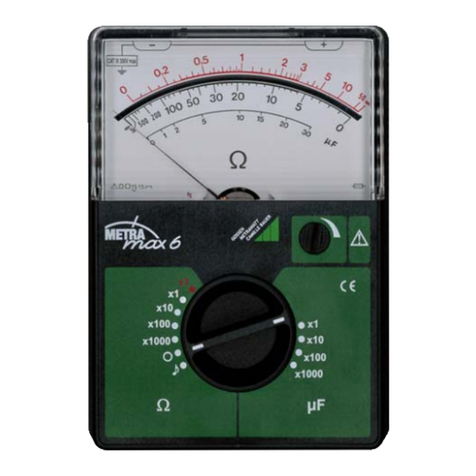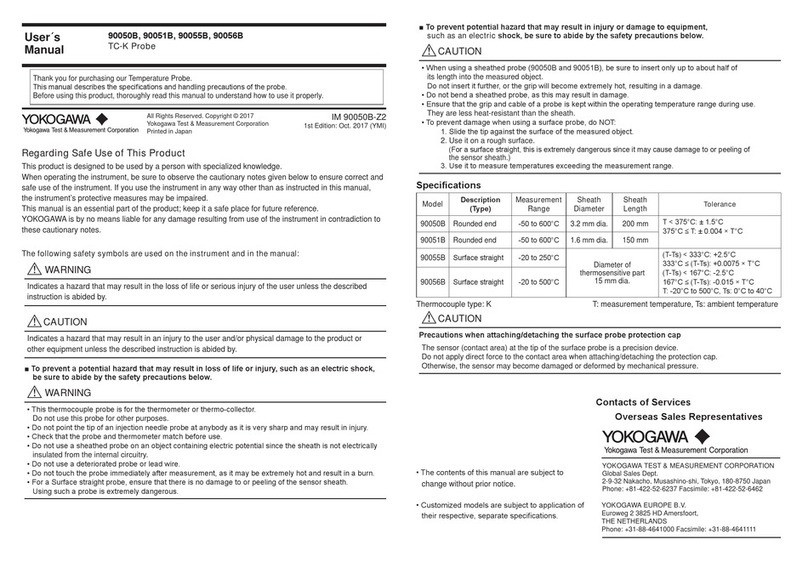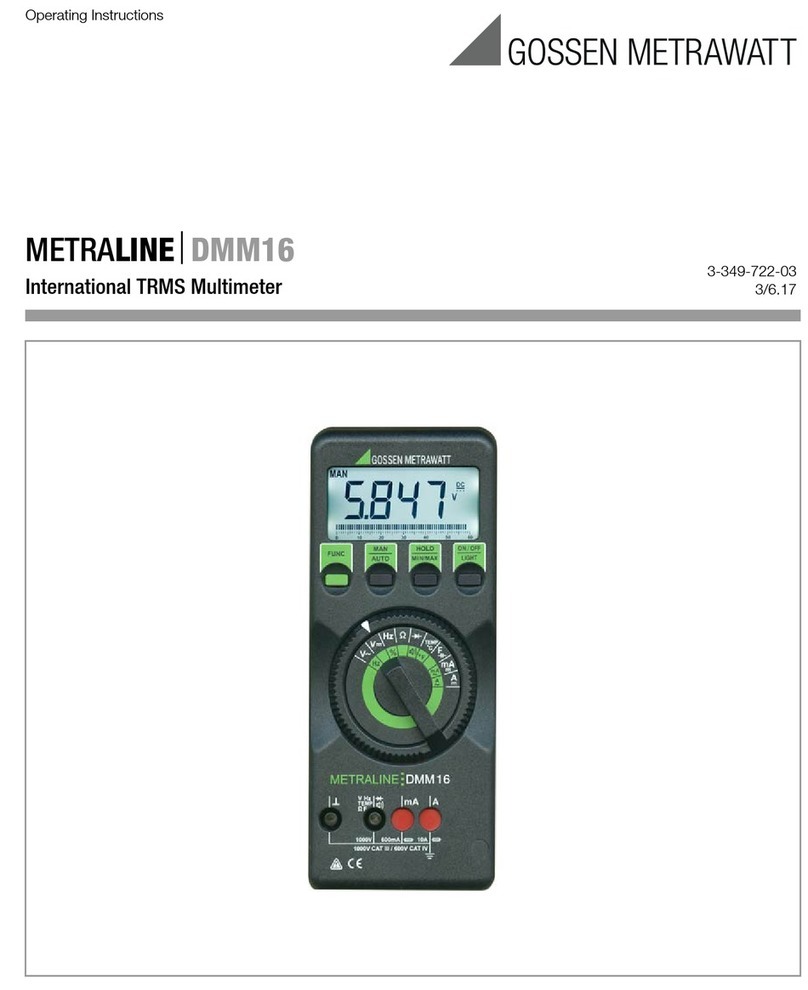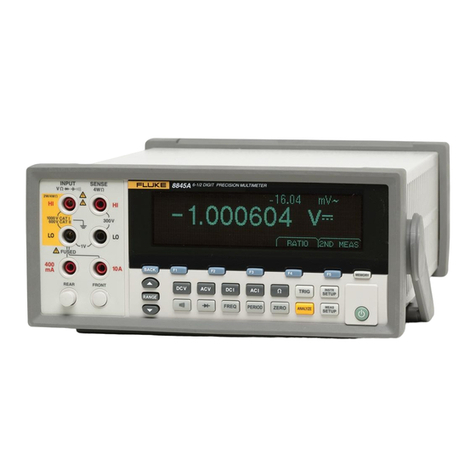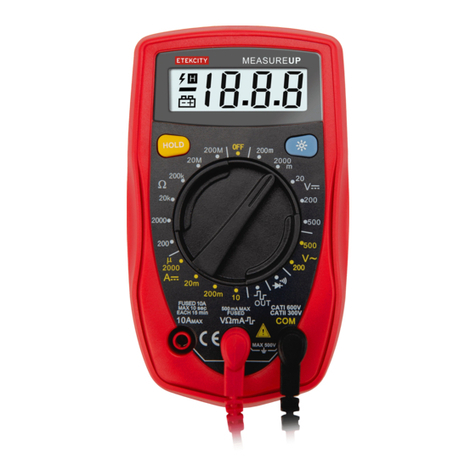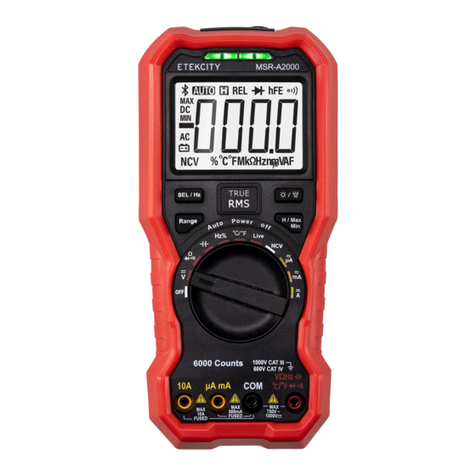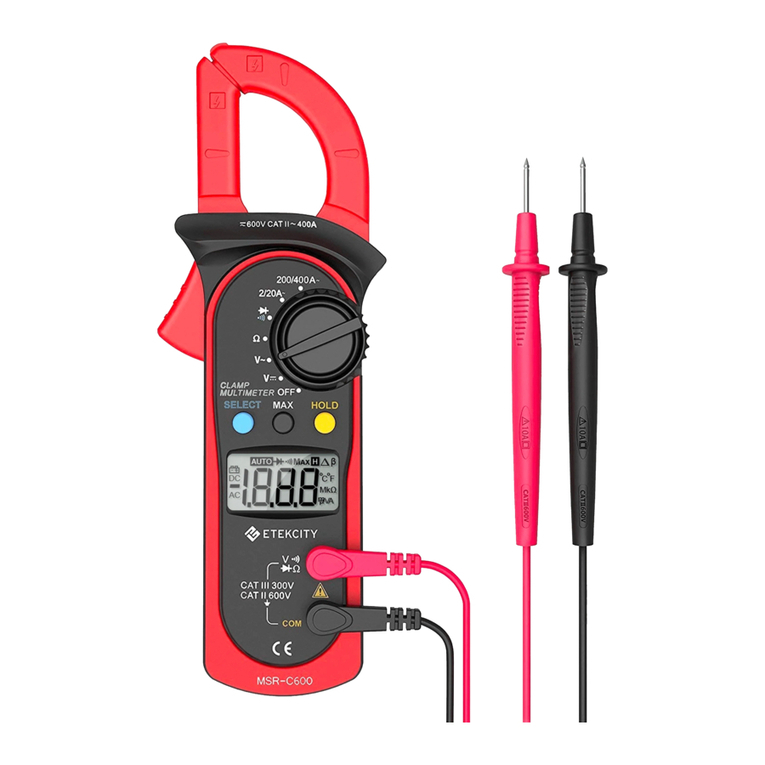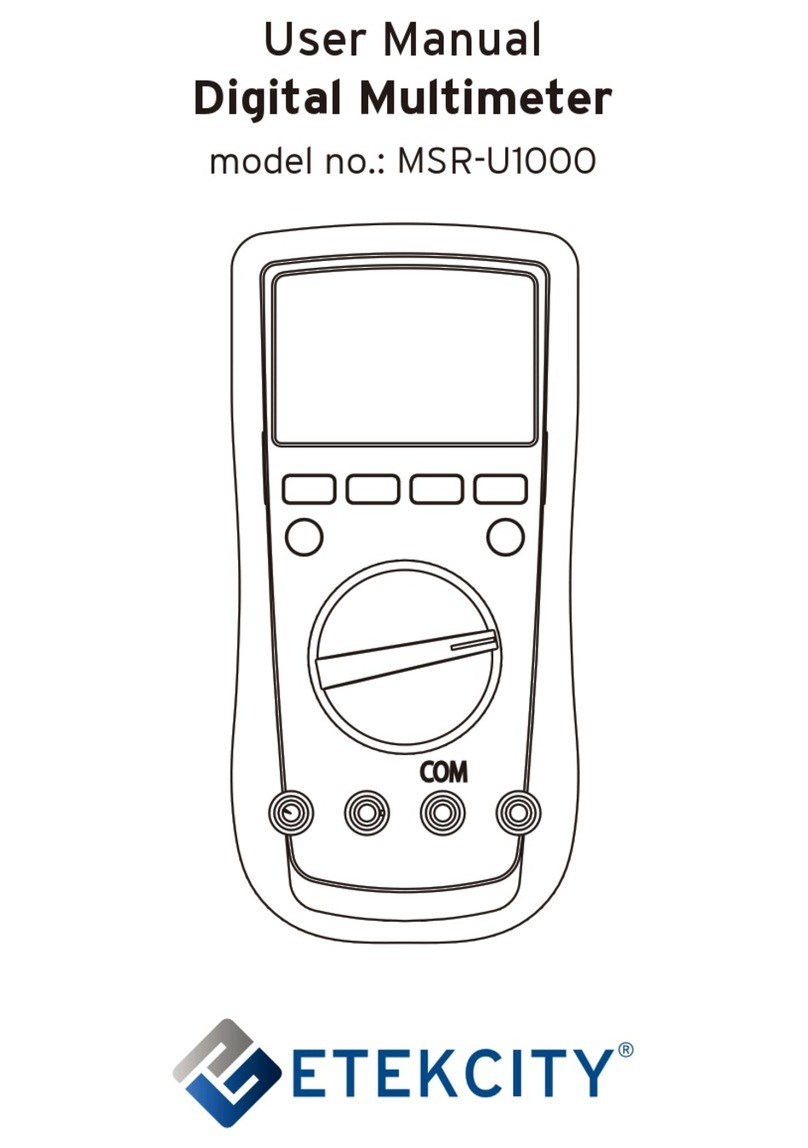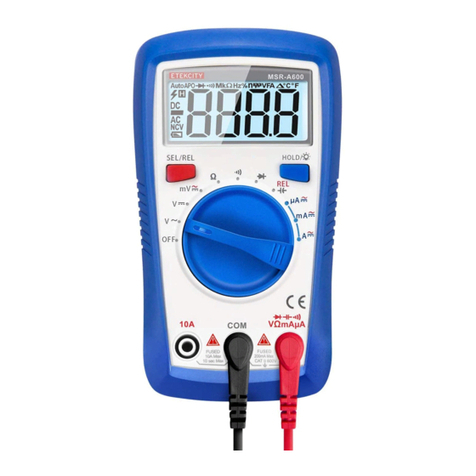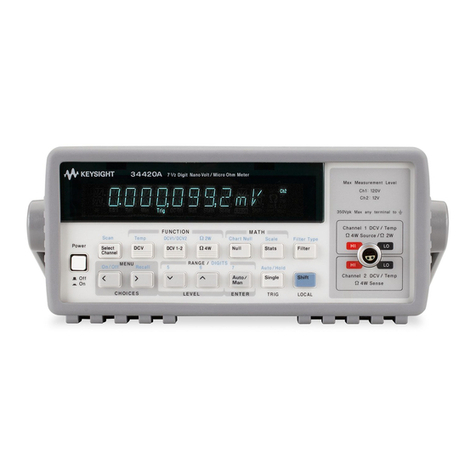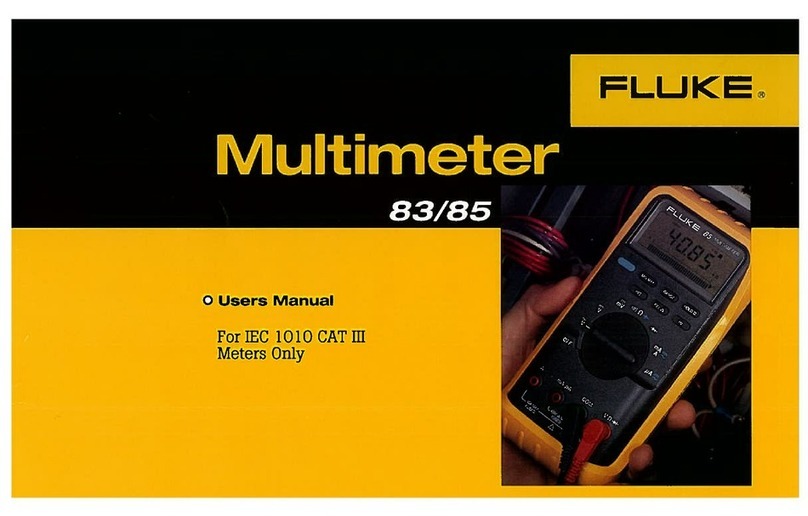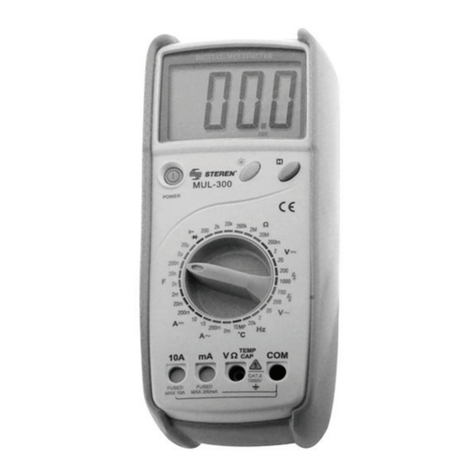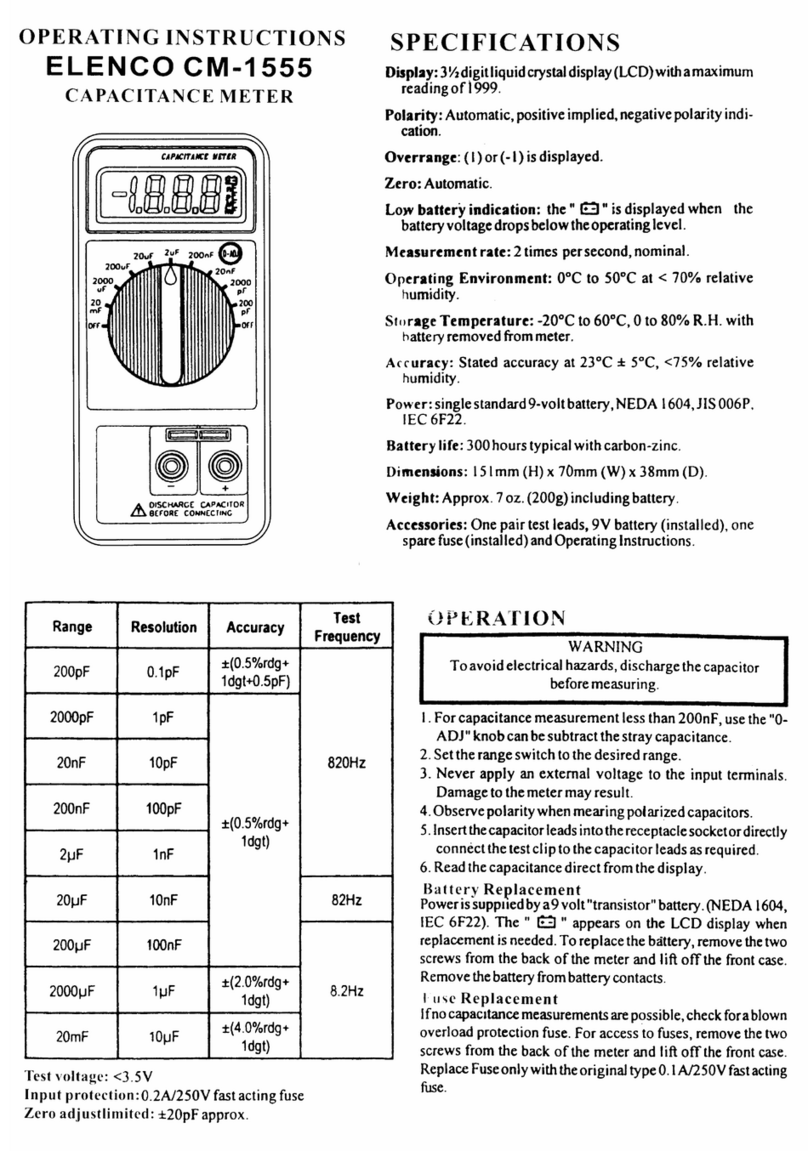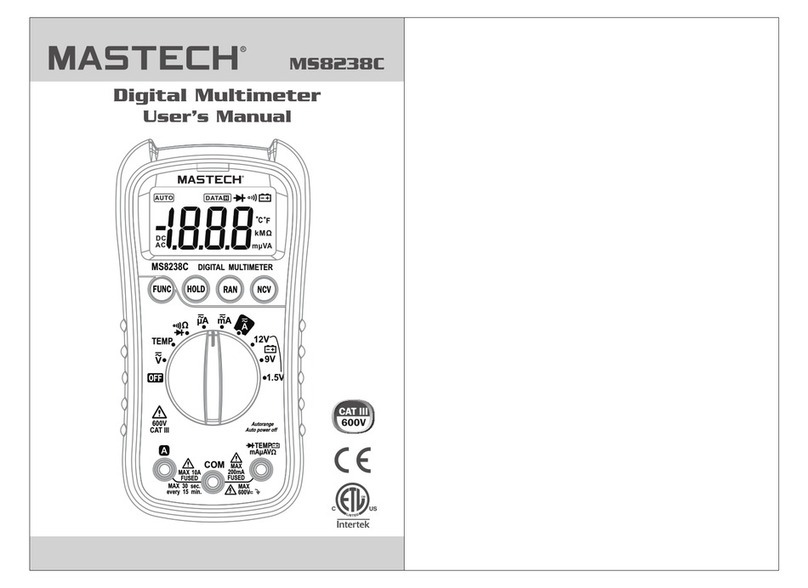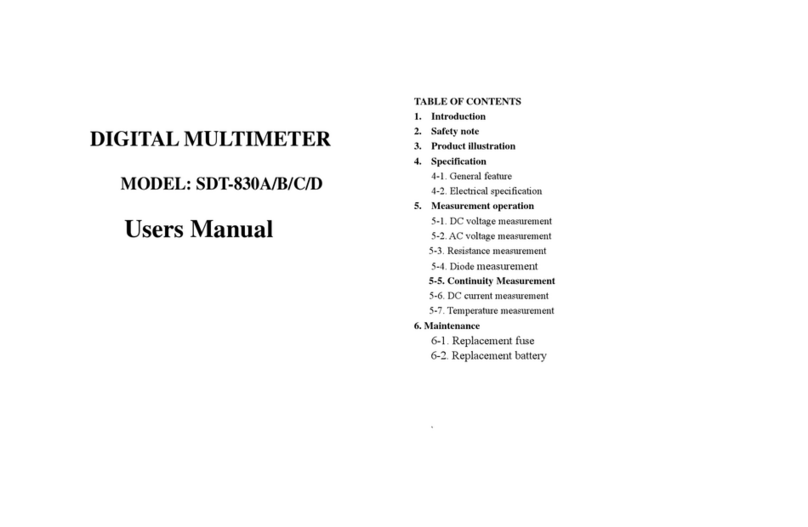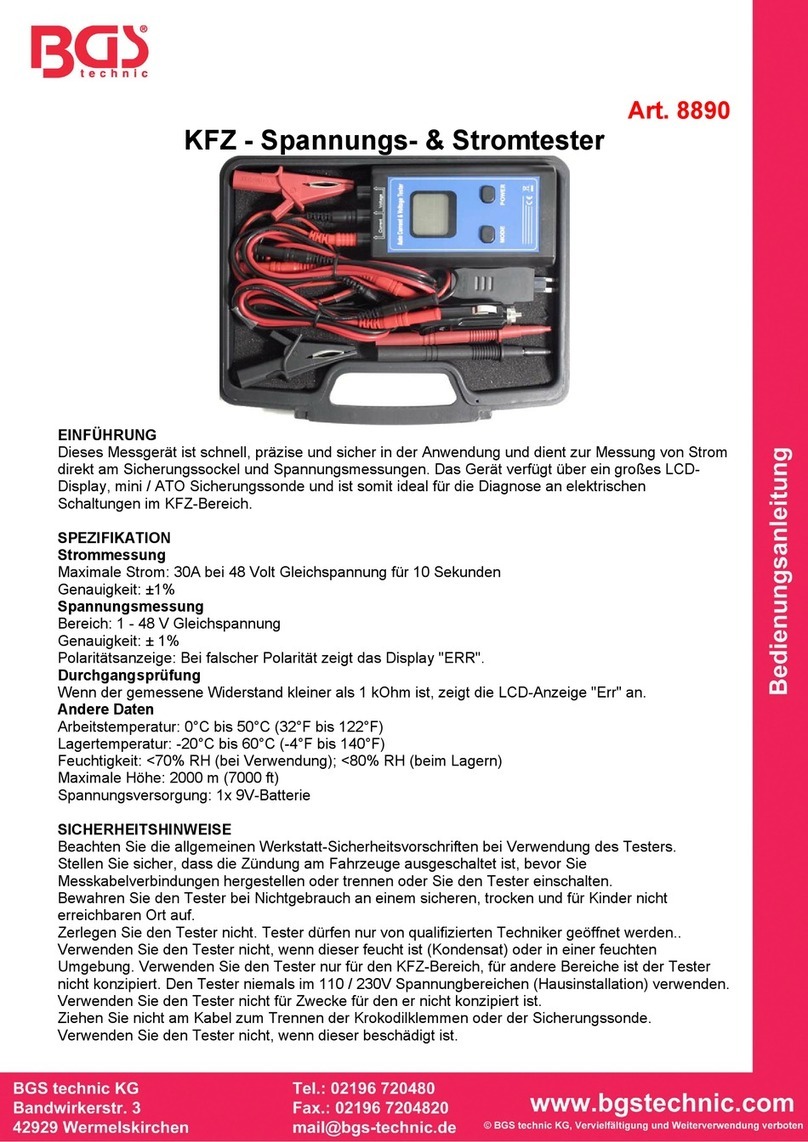
4
WARNING
Safety Information
The following safety certification standards
apply to this multimeter:
• CE certifications
• EN 61010-1:2010 and EN 61010-2-030:2010
• EN 61326-1:2013 and EN 61326-2-2:2013
• Overvoltage category: CAT II 1000V/CAT
III 600V
• Double insulation
• Material pollution grade II
Only use the multimeter as directed, or the
multimeter may be damaged, and you may be
seriously injured.
• To reduce the risk of fire, electrical shock,
or other serious injury, please read and
follow all instructions and warnings in this
manual.
• The person responsible for this
equipment must ensure that all users
understand and follow the instructions.
• To avoid electric shock, never connect
leads to power sources that may exceed
1000V.
• Check the insulation layers (protective
coverings) of the multimeter and the test
leads before use. They should be in good
condition without any damage or broken
wires.
• To avoid electric shock, do not use
the multimeter if the rear cover or the
protective jacket is not fully in place.
• Do not use the multimeter if it is
damaged, if any part is removed, or if
you suspect that the multimeter is not
working correctly.
• Always inspect all parts of the multimeter
and the test leads before using. Always
replace damaged test leads.
• Do not apply more than 1000V between
the multimeter terminal and the ground.
In this manual:
WARNING identifies conditions and actions
that are dangerous to the user or may damage
the multimeter and test leads.
